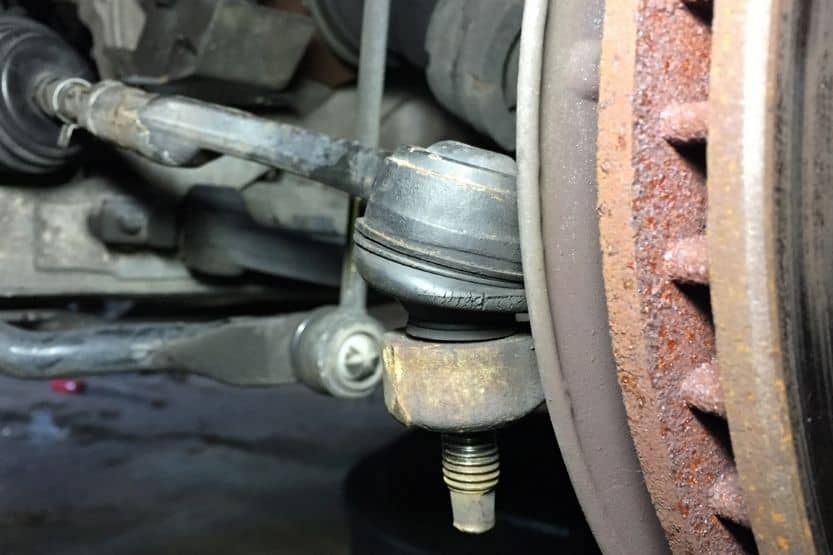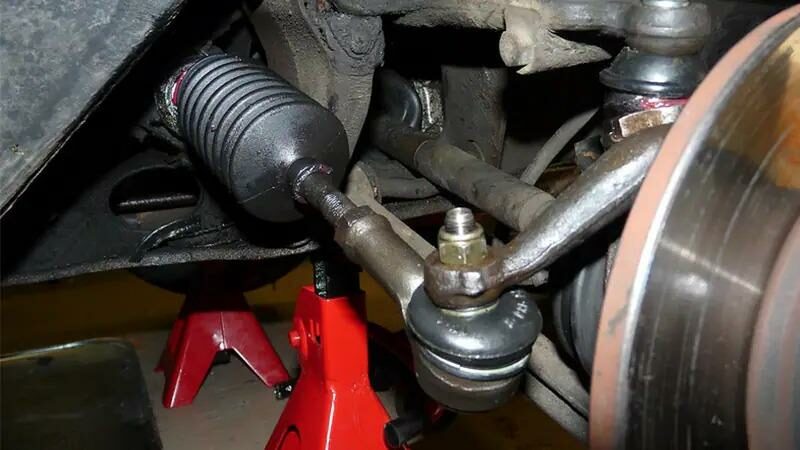What is a tie rod end and what is its function?
A tie rod end is a ball joint that is located on the left and right of the two outer ends of the tie rod. In addition, a tie rod end has the function of transmitting the force from the tie rod to the steering arm during steering. Another task of the tie rod end is to absorb the unevenness from the road and ensure a level surface.
What are the symptoms of a defective tie rod end?
The typical symptoms are that you can no longer steer precisely. There is a lot of play in steering movements. Your front wheels rumble and you hear rattling noises when going through a turn. Sometimes you also have a cracking sound when you turn in, which sounds like a metallic noise. Or if you’re driving on uneven roads with or without stone pavement, you think there’s been a bump. If you have one or more of these signs, your tie rod end is probably defective.
Track rod end knocked out, what can happen?
This process is gradual and may not always be noticed by the driver. It can be said that when the tie rod end is knocked out, things can get really serious. If you continue driving, the front wheels can become transverse, all steerability of the car is lost. If you drive slower, you can still prevent bad consequences with an emergency braking.
However, if you continue driving with the defect on the highway or on a country road, serious accidents can occur, usually with fatal consequences, because you no longer have control over your car.

Can you repair a tie rod end yourself or should you take it to a workshop?
In your own interest, you should not repair it yourself, because you cannot judge whether it is really the tie rod end. Besides, you need special tools and a lifting platform to lift the car, which only a specialized workshop has. Other defects can also be connected with it, so it is best to leave it to a specialist to check the tie rod end. Changing the tie rod end is done by a specialist with the help of a forcing tool and a puller, which dismantles the old part. After changing the tie rod end, the track of your vehicle is adjusted and the axle is measured, then you can again safely and without hesitation move in traffic.
What does the repair or replacement cost?
If it is only about tie rod ends, the expert can quickly determine the reason. Assuming you only want to have a tie rod end checked, if you are already there, you should better have it done at times. Thus you can avoid perhaps a timely repair. You should also have the tie rod ends checked by a workshop if the car has bounced hard against a curb and you feel something strange in the steering. Under no circumstances should you delay such unusual behavior, as worn tie rod ends can also cause further damage. First of all, you can check whether it is absolutely necessary to replace both ends. As a rule, the replacement of tie rod ends takes about an hour. It can also happen that more time is needed if bolts, nuts or the tie rod end are heavily rusted and cannot be loosened. The cost of a tie rod end replacement is approximately between 130,- to 200,- dollar per side. The exact costs for a change or a repair depend on the manufacturer, working hour and the workshop. Axle measurement and wheel alignment are also included. Costs for wheel alignment with adjustment are about 90,- to 200,- dollar.

General tips
An important reason for premature wear of the parts is the inferior quality The components are exposed to too much intensive stress during operation. Therefore, it is advisable not to save money at the wrong end, because quality just has its price and in the end you will benefit from it, as your components will last for a long time.
Experts say that the lifetime of the tie rod end is 40,000 km, but poor quality of the road, aggressive driving habit and non-observance of the controls can reduce this figure mightily. Consequently, the longevity of a tie rod end depends on its use and maintenance. This means that if the vehicle is driven very often over cobblestones or other roads that are not so well maintained, then the ball joint will break down more quickly.
Another disadvantage, when the ball joints rust, the rubber inserts are deteriorated because the dust protection, which is supposed to protect against moisture and dirt, is no longer there. The lubrication washes out and the joints wear out.
The deformation of the tie rod end occurs when the threads are not properly installed and operated, when arbitrary attempts are made to adjust. Therefore, please do not do it yourself, but visit a workshop and get advice from a professional.



